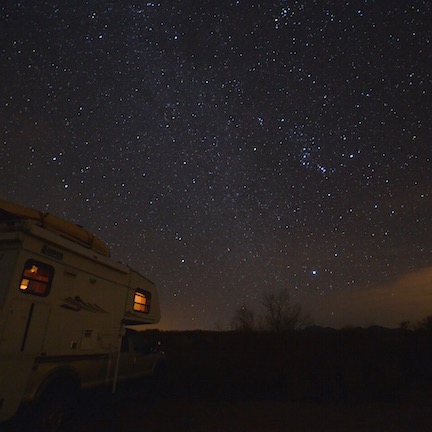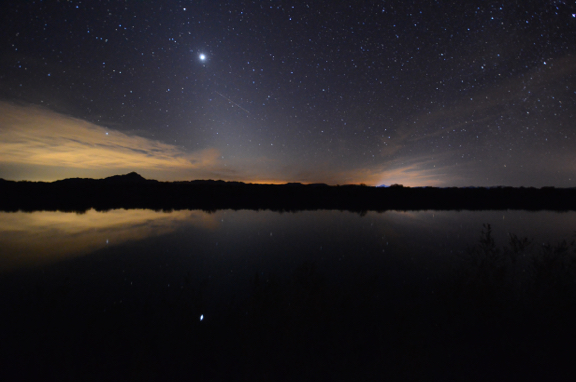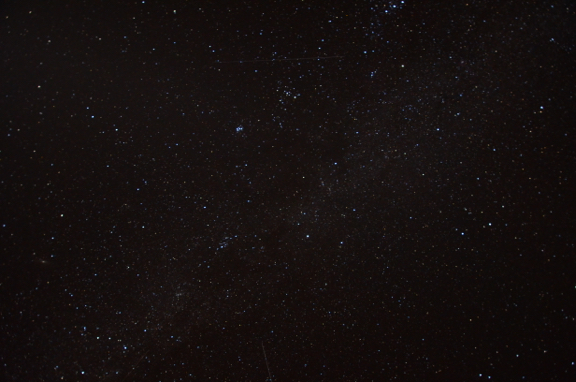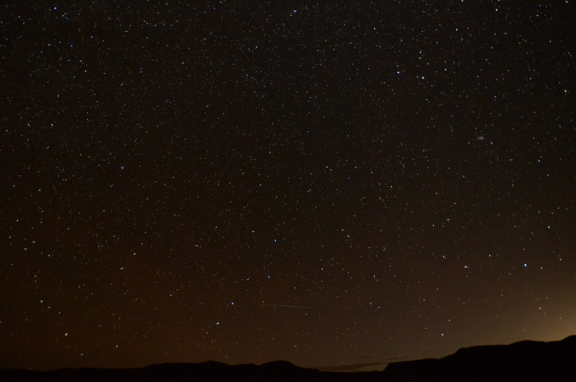I make new friends at Four Corners Camp.
– Day 1: Packing and Heading Out
– Day 2: Finding the Perfect Spot
– Day 3: The Eclipse and More
– Day 4: The Travel and Wine Tasting Day
– Days 5-7: The Palouse, Spokane, and Lake Roosevelt
I woke up very early, as I sometimes do. It was still dark out. There were billions of stars in the sky over our camp.
I made coffee and settled down at the table to write up a blog post about the previous day’s activities. It got light out. The three guys who had parked next to me and slept in the woods came back to their truck. I watched them load up their gear and drive out. No one stirred at the other camper.

Technically, this is Forest Road 100. But realistically, it’s just a two-track trail into the forest.
Since I hadn’t yet put photos in the post and I didn’t have any kind of cell signal at all anyway, I closed up my laptop and made breakfast. Then Penny and I went for a very short walk — about half a mile — up the forest road that had been gated off. A small creek babbled along one side, hidden in the weeds. I heard birds and the occasional sound of a passing car on the main road. I’d worn the wrong shoes; I was wearing street shoes but I should have been wearing hikers to protect my soles from the sharp rocks that had once graveled the two-track trail. So we turned around and headed back. I really liked the way the sunlight shined through the tops of the weeds.
It didn’t take long to get ready to leave. Really: it’s just a matter of putting away loose objects. I’ve learned over the years I’ve been RVing that if you put everything away when you’re done using it, you can be ready to go in just a few minutes.
When I rolled out of my campsite at about 8 AM, there had still been no movement from the other RV. Talk about sleeping in!
On the Road Again
I continued on route 395 southbound, passing Dale and the 4127 foot Meadow Brook Summit. It was around then that I started noticing tents and RVs parked alongside the road in places that looked like they might be public land. But the biggest crowd I saw was at Ritter Butte Summit (elev. 3993). It was a mostly grassy hillside with what looked from the main road like a low fire tower on top. There had to be at least two dozen campers in tents and RVs parked all over an open area just off the road. It was tempting to just pull off and join them, but I was convinced that a better spot was up ahead.
I did pull over, though, and that was to use my phone and make sure I’d downloaded maps I needed for going off the grid. I just GaiaGPS on my iPhone and iPad and I highly recommend it. It’s one of the few apps that allow you to download topo maps — as well as other maps you might find useful — so they’re handy if you don’t have a cell signal. I had a five bar LTE signal at Ritter Butte thanks to the cell tower next to the fire tower.
When my map downloads were set up and my podcasts updated, I continued on my way. Google told me 50 miles before that I needed to make a left on Main Street. Main Street turned out to be in the small town of Long Creek, which was really rocking with eclipse visitors. I didn’t stop. Instead, I made the left where instructed and headed southeast along a narrow chip-sealed road.
I passed a few farms and ranches as the road cut through a grassy landscape with forests on hilltops nearby. Then the chip-seal turned to gravel and I entered the forest.
Now campers were common on either side of the road. This was national forest (either Umatilla or Whitman or maybe even Malheur — they all run into each other in this area) and camping was allowed pretty much anywhere. People had set up little communities of RVs and tents here, there, and everywhere. I wondered whether I could just join in on one of them and was sorely tempted when I saw three Lance rigs just like mine parked out in a field. But I still thought a better spot was ahead, so I kept going.
Have I mentioned the signs? I don’t think so. I started seeing them the day before, just south of Pendleton on route 395, but they were out here, too. Flashing construction signs, all with the same basic message: “Fire Danger Extreme” and “No Campfires” and “Do Not Park on Dry Grass.” I think I passed at least five of them between Pendleton and my final destination.
Magone Lake and the Campsite Hunt
What was that destination? Magone Lake. The line for totality would pass right though it. A small lake in the national forest, surrounded by unpaved roads, hillsides, and trees, about 20 miles northeast of John Day. I thought it might be remote enough to be a little less crowded than other popular destinations.
Well, it might have been less crowded, but it was still crowded. I reached the turnoff and was startled to see a freshly asphalted one-lane road with turnouts. There were people camped out alongside the road all the way down to the lake. One guy had even pitched a tent in the road shoulder. Of course, the two campgrounds were full. There were people milling about all over the place — exactly the kind of scene I wanted to avoid. This was at 10 AM, a full day before the eclipse. It would only get worse.
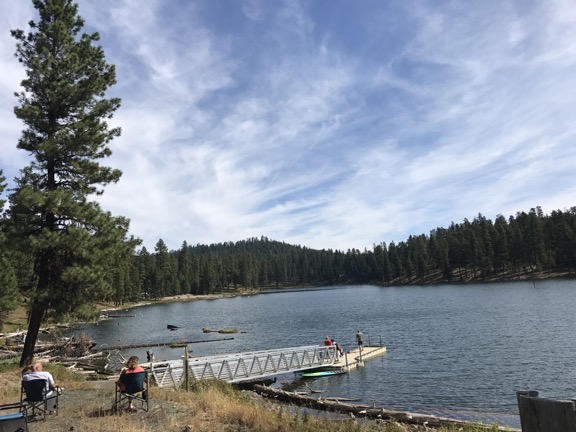
Magone Lake is a pretty little mountain lake about 20 miles from John Day.
I drove to the boat ramp area and parked to take a look around. As usual, people commented about Penny, who I had on a leash. Everyone was friendly and upbeat — they probably already had overnight parking spots! I found a trail that looked like it would go around the lake and considered doing a short hike, but decided that I’d be better off finding my campsite and saving the hike for after the eclipse. So we got back into the truck and started out.
I can go into a long story here about how I used my downloaded topo map to find roads to explore that might have good campsites on them. I could tell you about how many people I saw camped in the most inappropriate places (think dense woods with no view of the sky). I could even tell you how I actually parked and got the truck up on leveling blocks in a lonely forest campsite not far from the lake. But the short version is that I decided that I didn’t want to experience the eclipse alone and needed to find an existing camp to join.
Eventually, after many bumpy miles on rugged dirt and gravel roads, I wound up in a place called Four Corners. It’s a crossroads that just happens to have some relatively parking spots and fields. Trucks, cars, and RVs were parked where they could fit. I cruised through with both windows open, looking for a place I might be able to squeeze in the truck without bothering other campers.
I was eying a patch of dirt near a large motorhome when I heard a guy yell out, “Innagadadavida!” I looked and found a guy a little older than me looking at me. He yelled it again, at me.
What followed was me selling myself as a good addition to their campsite who would take up very little room. Yes, he was expecting seven more people (none of whom showed up, by the way) and the folks with the motorhome were expecting three (who did show up later on). My sales pitch worked and they pulled aside their makeshift road block to let me in. Soon I was leveling the camper on the blocks and putting my solar panels out to soak up the sun. I’d be there for more than 24 hours.
It was about noon.
At Four Corners Camp
Although the Innagadadavida guy (Jay) had invited me over to their camp across the road, I made myself lunch first. Later, I went over and spent some time with him and his friends. The next day would be his and his twin brother John’s birthday. John was there, too, along with some other people whose names I’ve already forgotten. They had two ukuleles and a guitar and an electric base guitar (powered by an inverter connected to a 12 volt car battery) and a drum kit. Short a drummer, they asked me to sit in and even gave me a few drumming lessons. I managed to keep the beat with the base drum’s foot pedal, but getting my two hands to act independently was a whole other story. In the end, I kept rhythm with a drumstick on an empty whiskey bottle while John played the drums. It was a fun way to spend the afternoon, just hanging out with new friends.
A stranger is often a friend you haven’t met yet.
I flew my drone a little, too. Not enough to annoy people — at least I hope not. I wanted some aerial views of the camp, which I began calling Four Corners Camp. We were on the fringes. There were probably two hundred people camped out within 50 acres or so. More people came in all afternoon and even after sunset.

Our campsite from the air.
The motorhome people’s companions arrived: three retirement age men who set up a 25-year-old tent that looked brand new. The motorhome people included a husband (Amir) and wife, two of their sons, and one son’s girlfriend. Most of them hiked to the lake in the afternoon. I’m not sure, but I think it was a long hike.
I did some repairs. I’d gotten the bright idea to put my clothes in the cabinets in the sleeping area and use the drawer under one dining bench for books and computer stuff I’d brought along. It would make that stuff handier. Trouble was, that stuff is also heavier and the constant bumping around on back roads had caused the screws to come loose on one of the drawer support arms. I had to use some Gorilla Glue to help the screws bite and stick to get the support arm back in place. I had everything I needed for the repair so it wasn’t a big deal. But I did have a lot of junk just sitting out waiting to be put away for most of the evening.

We had a nice sunset with high, thin clouds.
Mother Nature treated us to a nice sunset. We were a bit worried about the cloud cover, but I suspected it would clear up overnight.
To that end, I prepped my Nikon for a night photo shoot, getting all the settings on the camera and actually setting up the tripod outside my door. If I woke up as early as I had that morning, I could go out and shoot before dawn.
I had a salad for dinner. Later, the motorhome people offered me a hamburger, which I declined. I did hang out for a while in their motorhome with them. They were a happy bunch. The two boys were headed off to college soon and their parents were semi retired and planning a cross-country trip in the motorhome, which was new to them. I was glad to see people living life while they were still young enough to enjoy it. So many people wait too damn long.
Penny and I went back to the camper at around 9 PM. I spent some time reading a book about eclipses that I’d bought for the trip but soon fell asleep with the book in my hands. I turned out the light and went to bed.

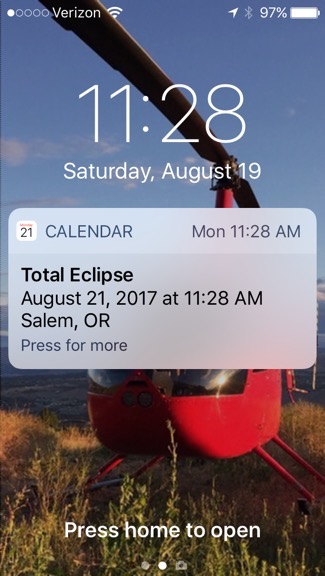


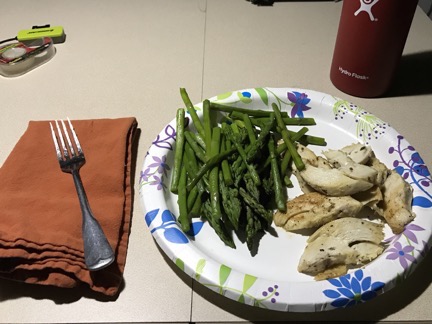

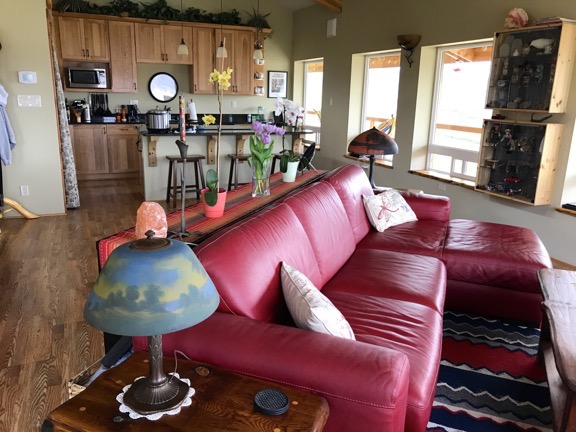
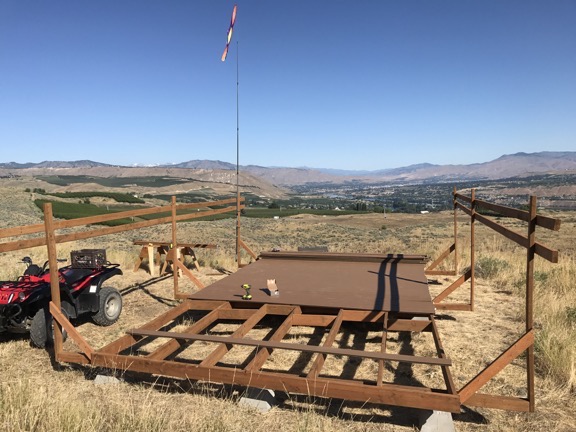
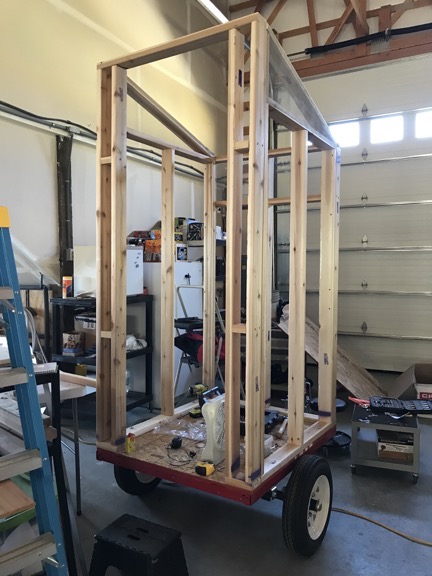




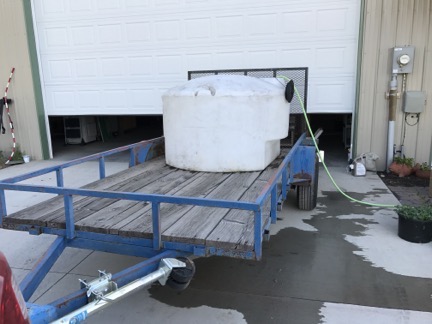
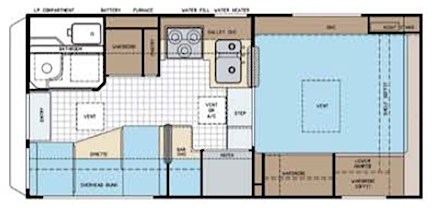
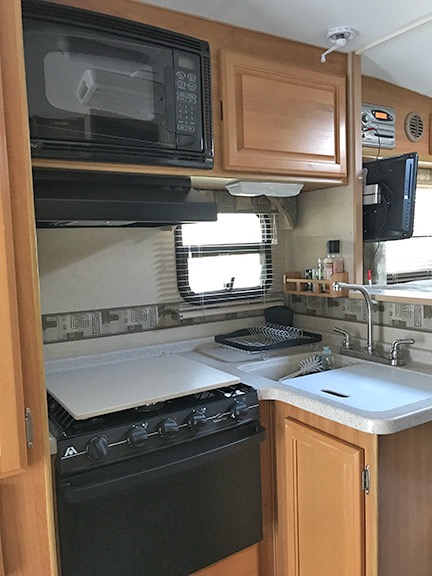

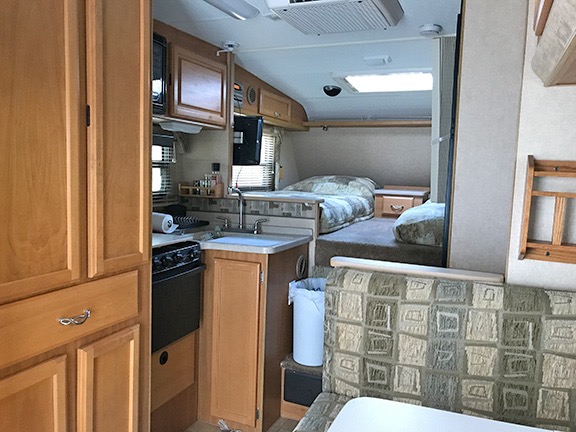

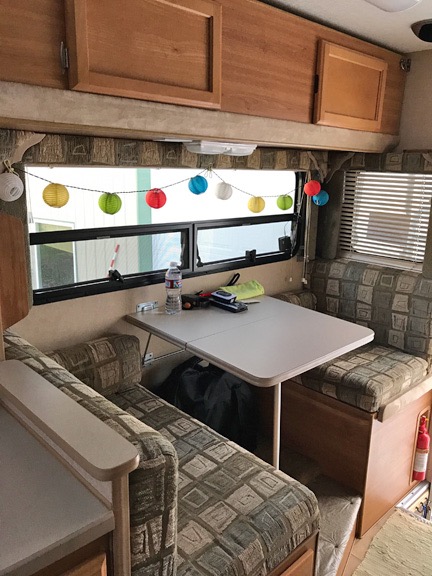 Because the dining area isn’t on a slide, there’s storage overhead. That cabinet actually folds down to be used as a bunk for kids or a huge storage shelf. (And yes, I already hung my solar Chinese lanterns.)
Because the dining area isn’t on a slide, there’s storage overhead. That cabinet actually folds down to be used as a bunk for kids or a huge storage shelf. (And yes, I already hung my solar Chinese lanterns.)